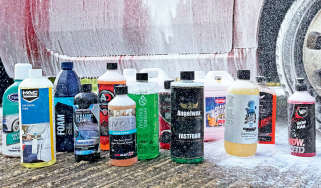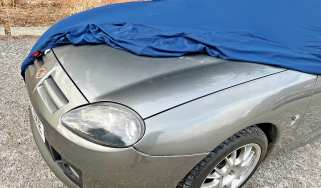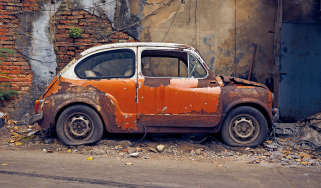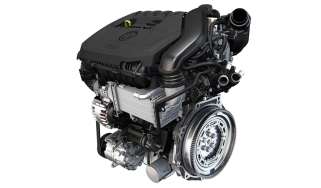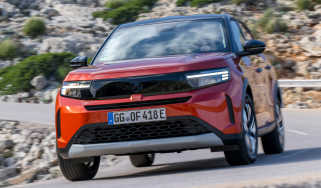Best car wash options: what are hand, auto and jet washes doing to your car?
Choosing the wrong car wash can cause thousands of pounds’ worth of damage to your car’s paintwork. Our experts tell you how to choose the best option
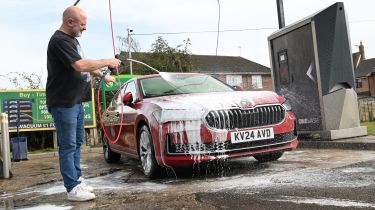
If your car is looking a little grubby, you might think you are doing it a favour by taking it to a car wash. But the unfortunate reality is that you could actually be doing the paintwork more harm than good.
Drivers who live in flats or houses with no off-street parking will usually rely on a ‘drive through’ car wash to banish the muck from their motor, but using one with dirt-laden brushes and harsh chemicals could cost thousands to put right.
We asked Richard Tipper, who is regarded as one of Britain’s best car detailers, to point out the pitfalls and suggest how to choose the best way to clean your car.
Jet Washes
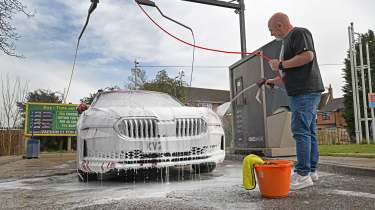
The jet wash at a petrol station can seem like a better option than the automated machines because you’re in control. But the idea of dragging a dirt-laden brush over paint makes Tipper wince.
“I can see the attraction of these if you can’t access a hose at home, and you will be able to make sure you can get into all the parts of your car that a mechanical wash will miss. But I’d steer clear of the brush, because it will be full of dirt from the last person’s car, or from being left on the ground.
“My advice would be to leave the brush out of it and just use the lance to apply foam and then rinse. You could always bring your own bucket and wash mitt and use those instead, then you can ensure they are clean.”
Hand Car Washes
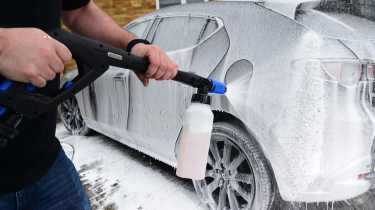
There’s no shortage of hand car washes in Britain. They range from top-end valeters based in the underground car parks of posh city-centre apartment blocks to scruffier set-ups in disused petrol stations.
“My first bit of advice would be to look online for reviews, just like you would for a restaurant or any other service,” says Tipper.
“Then get there early in the morning, if you can. The operatives will have fresh water, clean cloths and will have rinsed their wash mitts ready for the day ahead. Staff are also likely to have mixed the chemicals with greater accuracy because they won’t be in a such a hurry with the pressure of a long queue of customers.”
You should also be looking out for the essential pre-wash phase to remove the worst of the dirt, preferably using a snow foam rather than an aggressive Traffic Film Remover, or TFR.
Tipper says: “Most of these are acid-based, and some car washers mix them up to be far too strong, thinking it will work better. But it doesn’t, and such a potent formula can actually end up marking alloy wheels and stripping the lustre off window rubbers.”
He also says it is easy to spot a car that’s freshly out of a hand car wash, because it will have glossy splatters down the side.
“The final flourish at these places is to slop on painted-on tyre shine. It looks fine while the car is stationary, but as soon as you drive off it gets flung off onto the side of your car,” he adds.
Automatic Washes
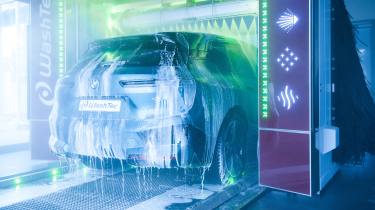
Again, there are good and bad mechanical car washes, most of which are attached to fuel stations. On the plus side, they are unlikely to use overly strong chemicals because the dosing is done by machine, while the latest washers use softer microfibre brushes rather than hard nylon bristles.
Tipper still isn’t a fan, saying: “They are not great because they pick up all the dirt and grit from the previous cars and it then gets rotated repeatedly over the paint. They can also rip off trim or a wiper and then drag it along the car. They don’t do a great job either, because they miss bits like the inside of wheels or the corners by the number plate.”
Tipper also warns that some cars with powered bootlids can come a cropper in a wash, because the sensors take the brushes’ action as a cue to open. It’s important to see if your car has a car wash mode in the menu, or ensure the doors are locked.
If you have to use a car wash, Tipper suggests you look for a programme that has a prewash option to remove the worst dirt. Plus, there are some national chains that combine human and machine-washing elements, and these tend to give a better result.
How to fix your car’s imperfect paintwork
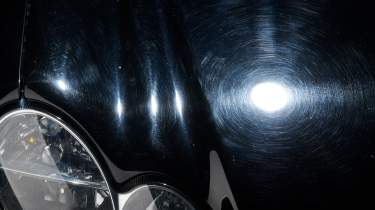
If you look at your freshly cleaned paint in bright sunlight or under a lamp, you are likely to see thousands of tiny scratches that make it appear as if there is a cobweb on the surface. Left over time, these imperfections will dull your car’s paint and make it look tired. These are caused by particles in the air, as well as bad car-washing habits.
“These tiny scratches will only be a few microns deep,” says Tipper. The clearcoat or lacquer layer on a modern car is thick enough to allow you to polish the scratches away to achieve a uniform finish several times without issue.”
If you are feeling energetic, this can be done by hand with a colour restorer, but it will be made easier with a machine polisher. Autoglym runs courses to show how to get the best results.
Prevention is better than cure, though, so consider protecting your paint with a ceramic coating.
Want to get your car looking new again? Read our guide on how to remove car paint scratches...
Find a car with the experts

